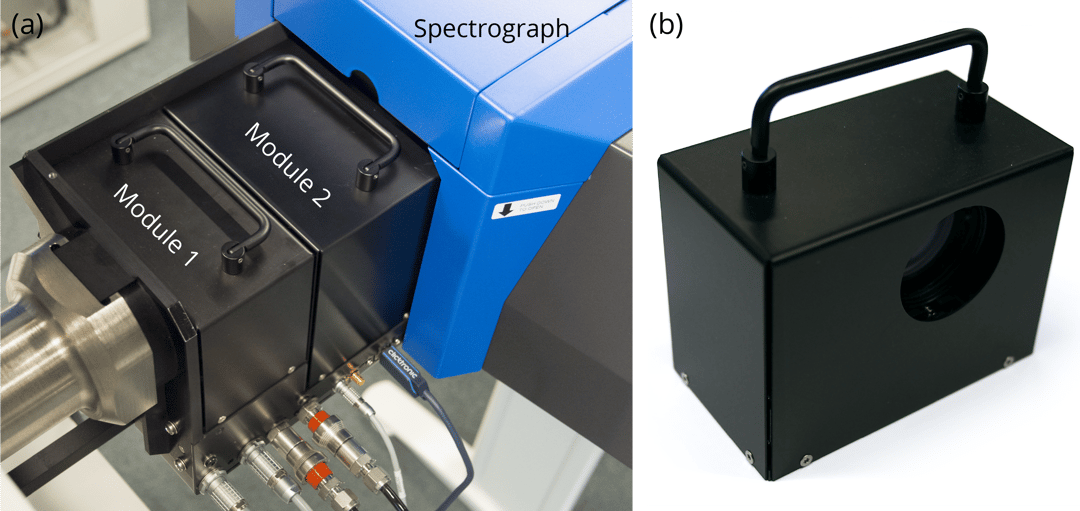One of such factors is how much experimental freedom the new system can offer. Not only it has to be configured specifically to cater your scientific needs, but also, ideally, it has to be modular in order to change as your experiments evolve.
The SPARC Spectral system is a powerful cathodoluminescence detector that offers such freedom due to its interchangeable optical module system. So, how does it work exactly?
The front part of the system consists of two optical module slots, which could fit one, two or double modules. The first module is an essential element, which holds two motorised lenses that are used to focus the light. The first lens focuses the CL emission to a small spot in the spectrograph slit. The second lens is adjustable and can be moved in an out for angle-resolved imaging. The lenses can be optimised for different wavelength ranges (VIS/NIR optics, NIR optics, UV optics), so you can easily switch between wavelength regimes.
The second module offers various implementations and functionalities. One version can be used for fast panchromatic and color-filtered cathodoluminescence intensity mapping; another one couples light into an optical fiber, which can be used to relay CL emission to a larger spectrograph or a time-resolved detector Lab Cube. Additionally, an empty module is available for custom developments.
The third module, which occupies both optical module slots, enables performing polarization sensitive cathodoluminescence measurements. All modules can be exchanged simply and fast, and controlled with Delmic open-source software.
Would you like to know more about SPARC Spectral system and its components, and more importantly, what kind of experiments can be performed? Then join an upcoming online demonstration of the system. Register below:
.png)







